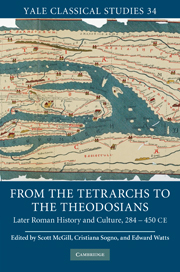Book contents
2 - Roman patronage
from PART I - POLITICS, LAW, AND SOCIETY
Published online by Cambridge University Press: 04 August 2010
Summary
A PECULIAR INSTITUTION?
There is a problem about patronage. Patronage has traditionally been viewed as a defining feature of Roman society, an institution of pivotal importance, offering a vital clue to the relative stability of that society over time. It was an institution as quintessentially and centrally Roman as patria potestas, the authority of a Roman male head of household. Nowadays, however, historians are saying that patronage was much less significant than it has been made out to be, especially in the sphere that (in their judgment) really mattered, politics. That is, in the first instance, for the period of the republic, when political office was highly regarded and fiercely competed for within the framework of a republican constitution – before monarchy arrived and transformed the nature of politics. It used to be thought, to put it simply and starkly, that the Roman aristocracy under the republic controlled the voting population of citizens through patronage, that what counted in elections was the quantity and quality of one's clients. The experts don't believe this any more. They follow Peter Brunt in his conviction that patronage relations were fragile, peripheral, short-lived, and did not count for very much – especially, but not only, in the late republican period.
As to the principate, again there is an old idea, now regarded as an anachronism, that with an emperor in charge private patronage became redundant. The emperor was universal patron, patron of all citizens, patron of all subjects.
- Type
- Chapter
- Information
- From the Tetrarchs to the TheodosiansLater Roman History and Culture, 284–450 CE, pp. 33 - 54Publisher: Cambridge University PressPrint publication year: 2010
- 4
- Cited by



